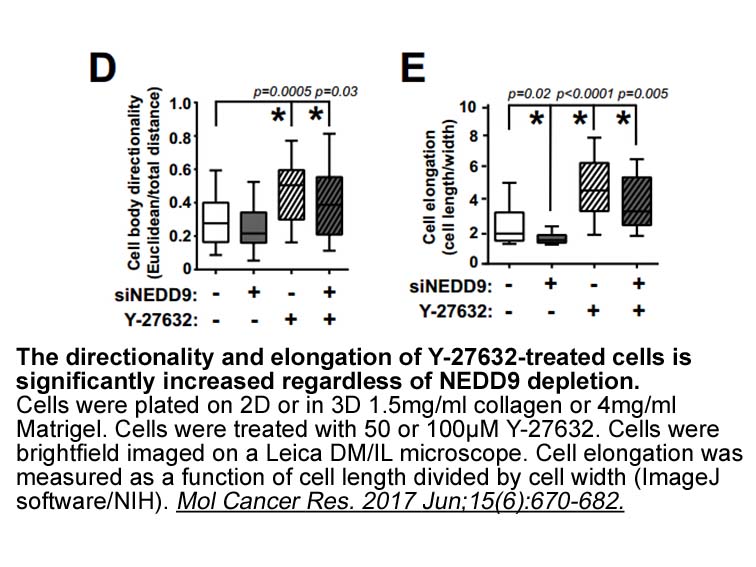Archives
Activation of AhR is also known to upregulate
Activation of AhR is also known to upregulate the expression of AhRR (AhR repressor), an inhibitor protein of AhR [29]. However, the exact mechanism by which AhRR represses AhR signaling is not well understood. The initial study by Mimura and colleagues suggested that AhRR is capable of directly competing with AhR in vitro by dimerizing with common bHLH/PAS dimerization partner protein Arnt and binding to cognate XRE sequence without transcription initiation [29]. A contradictory study by Evans and colleagues however showed that trans ient overexpression of Arnt in monkey kidney fibroblast COS-7 cells did not relieve AhRR mediated repression [30]. Furthermore, a point mutant of AhRR (AhRR Y9F), which retains its full Arnt dimerization ability but fails to bind XRE, was still capable of repressing AhR. Thus, inhibition of AhR activation by AhRR may result from recruiting of transcription co-repressors at the target XRE via formation of a higher order complex [31]
ient overexpression of Arnt in monkey kidney fibroblast COS-7 cells did not relieve AhRR mediated repression [30]. Furthermore, a point mutant of AhRR (AhRR Y9F), which retains its full Arnt dimerization ability but fails to bind XRE, was still capable of repressing AhR. Thus, inhibition of AhR activation by AhRR may result from recruiting of transcription co-repressors at the target XRE via formation of a higher order complex [31]
Endogenous functions of AhR
AhR-deficient mice have been independently generated from three laboratories [17], [19], [32]. As expected, AhR null mice strains fail to induce Cyp1a1 and Cyp1b1 expression upon ligand activation and are resistant to TCDD-mediated toxicity. In addition, AhR null mice strains also display a range of physiological defects, including growth retardation, reduced liver size, abnormalities in vascular structure, portal tract fibrosis, and decreased fertility, arguing for endogenous functions of AhR, especially during development [17], [19], [32].
The liver defect seen in AhR null mice is believed to result from patent ductus venous (DV), a clinical manifestation characterized by abnormal persistence of an open lumen in the ductus venous after birth [33]. During normal fetal development, oxygen- and nutrient-rich blood is fed into the developing heart and LDE225 Diphosphate via the DV, bypassing the requirement for hepatic filtration through the embryonic liver. Shortly after birth however, the DV is closed, forcing the blood from the portal vein to pass through the liver sinusoids before reaching the other organs such as heart and lung. Persistent opening of the DV during adulthood reduced the blood supply of the liver, leading to impaired postnatal liver growth, potentially via nutrient deprivation.
In addition to patent ductus venous, all three AhR knock null mice strains also display reduced fertility [17], [19], [32]. It appears that the effect of AhR knock out on female reproduction is multi-dimensional, ranging from difficulties in maintaining conceptuses during pregnancy to abnormal placental development and poor pup survival [34]. Studies by Baba and colleagues showed that AhR null female mice have markedly reduced production of mature follicles due to insufficient biosynthesis of estradiol [35]. Deletion of AhR in mice also resulted in placental labyrinth enlargement and altered the dam-to-pup filtration, leading to an increased deposition of teratogenic compounds to the embryonic compartment [36]. Finally, impaired mammary gland development has also been reported in the AhR null mice [37], which may contribute to the observed low postnatal pup survival rate in littermates raised by AhR null dams.
Gene expression profiles of livers or cultured hepatocytes from wild type and AhR null mice have been compared, independent of AhR ligands. It becomes apparent that even in the absence of AhR ligand, impaired AhR expression alters gene expression [8], [38]. Again, this highlights an intrinsic function of AhR in shaping the normal transcriptome of the cell.
The fourth line of evidence in support of an endogenous physiological function of AhR came from studies of invertebrate AhRs, including those in nematode, fruit fly, soft-shell clam, and blue mussel. Unlike mammalian AhR, the invertebrate AhR orthologs, although working as transcription factors, do not bind to any of the known AhR ligands. Instead, they regulate specific aspects of embryonic development, including GABAergic motor neuron fate specification in Caenorhabditis elegans, and dendrite arborization neuron diversification as well as antenna and leg development in Drosophila melanogaster[for a review, see 39]. Phylogenetic analysis suggested that the ability of mammalian and vertebrate AhRs to sense xenobiotics was acquired at a later stage of evolution, suggesting that the driving force for the evolutionary conservation of AhR not only lies on its role in xenobiotic metabolism but also in normal cell development.